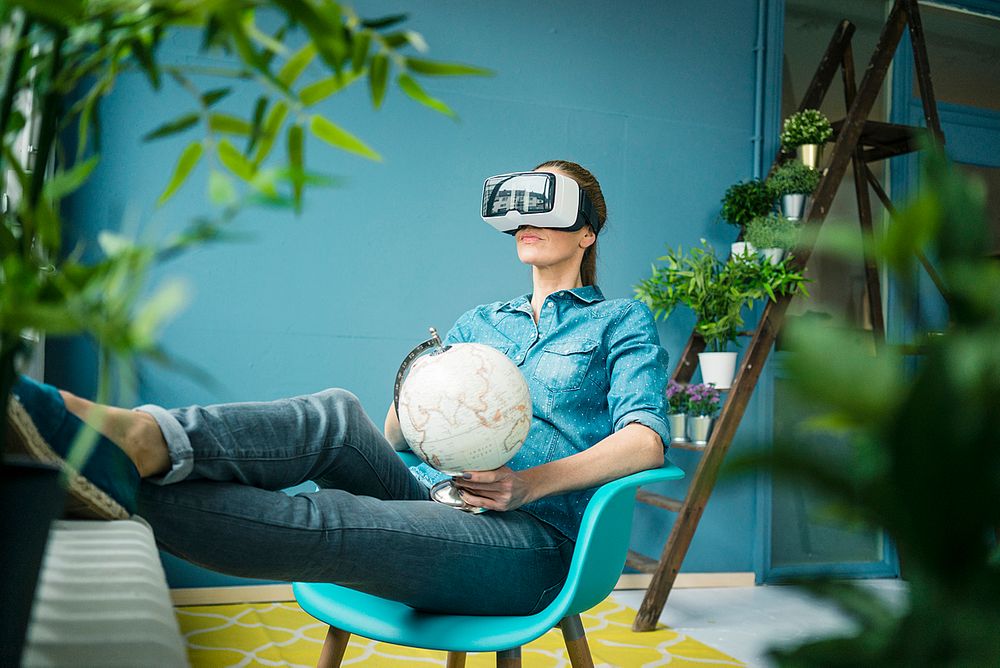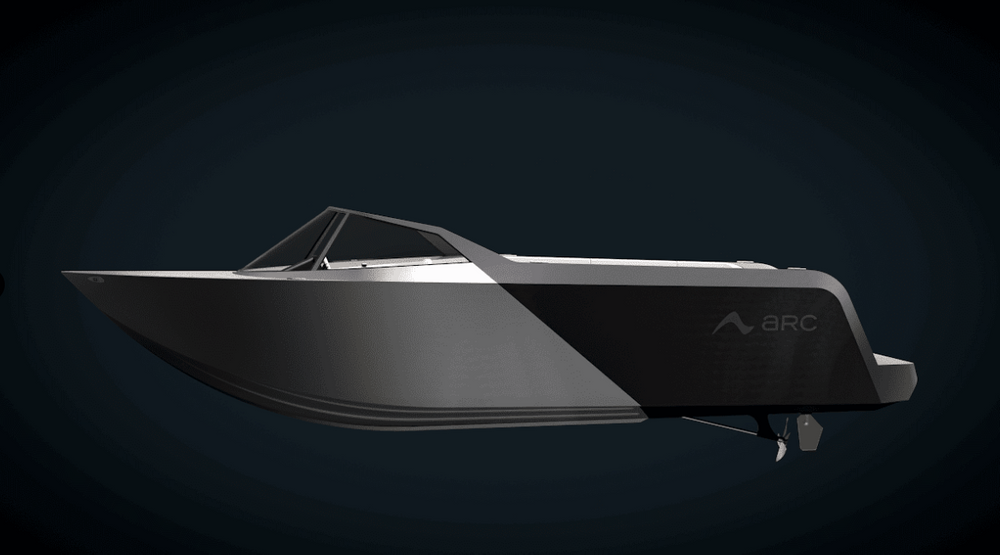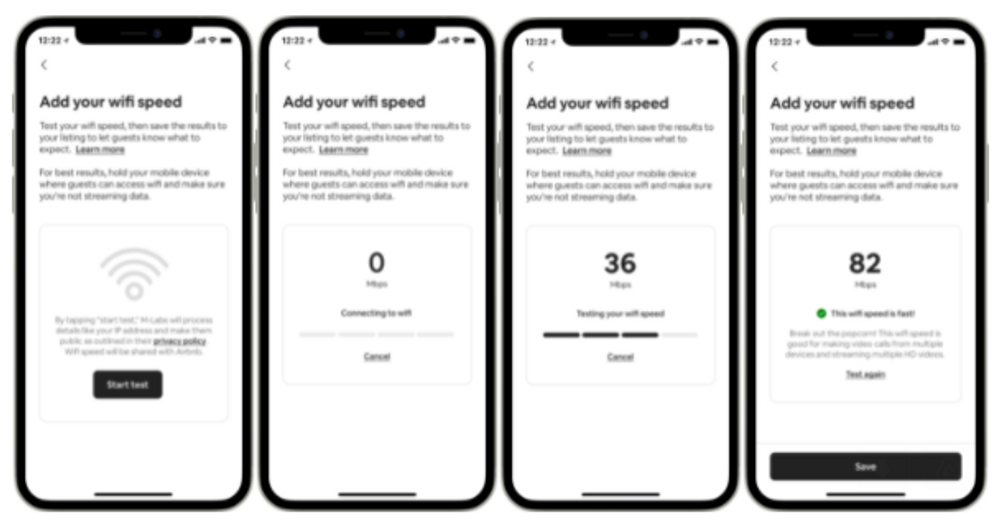|
Happy Friday. So, Big Tech had a big quarter. To summarize…
Apple Q3 ’21: Revenue up 36% year over year (YoY)
Microsoft Q4 ’21: +21% YoY
Alphabet Q2 ’22: +62% YoY
Tesla Q2 ’21: +98% YoY
Facebook Q2 ’21: +56% YoY
*insert Stonks meme*
In today’s edition:
 AR/VR travel AR/VR travel
 High-speed broadband High-speed broadband
 Electric boating Electric boating
—Ryan Duffy, Hayden Field, Jordan McDonald
|
|
|
Getty Images
|
In five years, you could be sightseeing across Rome, learning about ancient ruins on a tour of the Colosseum...all from within the four familiar walls of your living room.
At least, that's what a crop of travel companies and mixed reality startups envision, with the help of augmented reality or virtual reality (AR/VR).
In 2021, about 59 million people in the US will use VR and 93 million will use AR at least once per month, per eMarketer estimates—a 28% spike from 2019.
Where travel fits in
Popular mixed reality experiences center around gaming, fitness, and shopping, but the pandemic steered people toward uses they hadn’t considered before—and with borders closed and planes grounded, tourism was one of them.
- In 2019, just 20% of travel brands planned to invest in AR or VR.
-
In mid-March 2020, Google searches for “virtual travel” spiked 286%. And from March to June of last year, monthly searches for the term at least doubled year over year.
Along with the pandemic, 5G is also a catalyst. As networks expand coverage, AR/VR adoption stands to benefit from higher speeds and higher quality streaming. In a 2020 survey about expected benefits of 5G, 44% of US adults cited streaming VR content, and 36% responded with AR experiences.
New use cases
Sustainable travel: Due to overtourism, many of the world’s most popular sights have seen a surge in foot traffic recently, which doesn’t lend itself well to preservation. Mixed reality could help people check a popular sightseeing destination off their lists without dealing with the typical pain points (pricey tickets, long lines, quick photo ops).
- “Everyone’s on their phones, everyone’s geotagging, everyone’s trying to get that image,” Grace Olson-Davidson, a cultural client liason for Lithodomos, an Australian travel VR startup, told us. “What if we gave it to them without them having to get all the way there?”
Educational opportunities: Flyover Zone, an Indiana-based VR startup that specializes in virtual tours, makes scientifically accurate 3D representations of historical sites. It shows not only a place’s current state, but also how it likely looked thousands of years ago—including a “time warp” feature that allows a user to compare an individual spot’s appearance through time.
Click here to read the full story.—HF
|
|
|
Francis Scialabba
|
Congress has concluded it’s time to do something about our crumbling infrastructure and lack of quality Netflix speeds. The Senate reached a deal Wednesday to begin debate on a massive infrastructure package.
The Senate passed the test vote on the $550 billion bill 67–32, with 17 Republicans joining all Democrats to clear the first hurdle of the process.
In addition to investments in critical infrastructure (think: roads and bridges, clean energy, and public transit), the bill lasers in on the Biden administration’s plan to provide 100% of America with broadband coverage.
Follow the $$$: The version of the bill to be debated allocates $65 billion to increase broadband coverage. Even though that falls short of the $100 billion for broadband Biden originally proposed in the American Jobs Plan, the White House says it would still be significant, comparing it to the “historic effort to provide electricity to every American nearly one hundred years ago.
- The bill requires telecoms to offer an affordable plan to low-income families and boost competition in areas underserved by internet providers.
- The bill also carves out rules for a Digital Equity Act, which seeks to end digital redlining and help low-income families access the internet.
Bottom line: If the bill makes it through both chambers, it could help bridge the digital divide in the US. A Pew Research report from June found that almost 25% of Americans lack home broadband at all and some with internet lack the 25 mbps connection the FCC considers to be the bare minimum for “high-speed internet.”
With the pandemic keeping most of us tied down to video calls, gaming, and streaming, the importance of quality internet that can do those high data transfers is more crucial than ever.—JM
|
|
|
|
More specifically, we ended our relationship with silos in the workplace.
And just because we know you’re stalking our social media, you can check out the break up letter we wrote them.
We wouldn't go as far as to say that we never want to see their face again...mainly because silos don’t have faces. They’re a metal bin devoid of human features.
Anyway, point is: silos suck. They separated us from the work we love, made collaboration nearly impossible, limited our creativity, and—on top of that—they never remembered our birthday.
Read our official farewell to silos in the workplace right here.
|
|
|
Arc Boats
|
Yesterday, Arc Boats emerged from a 40-day flood stealth mode.
Preorders are open for Arc One, an all-electric, 475-horsepower pleasure craft priced at a mind-boggling $300,000. The rest of the spec sheet: 24-ft. length, 40 mph top speed, 3–5 hours of usage, and a 200kWh battery.
To compensate for that big ole battery, which is 2x the size of Tesla’s largest, Arc is building a bespoke aluminum hull and incorporating battery packs “as structural members of this boat,” CEO Mitch Lee told the Brew. The company wants to be as vertically integrated as possible.
- Of Arc’s 10-ish employees, Lee is the only person who hasn’t worked at SpaceX. The common thread among these rocket scientists-turned-boat makers is that they “specialize in making very lightweight structures,” Lee said.
The target market?
Sustainability-minded millionaires with “life is better at the lake” signs in their second home.
But Arc One is a limited edition, low-volume production boat. The plan is to move downstream to more affordable models by financing their production from Arc One’s cash flow. Tesla, a land-focused EV company, famously took this route with the Roadster.
Bottom line: Electric boats have low market penetration rates—under 2%, according to one boat trader periodical. In 10–15 years, Lee boldly predicts that “every boat will be electric.”
Arc’s real product—and chance to bridge that gap—could be the factory it produces to build boats. The first test will be whether Arc can begin boat deliveries in early 2022, as it has pledged.—RD
|
|
|
|
Trading noobs can get in the groove. Nothin’ wrong with being new to the trading game because Nadex created a simpler, less complex trading experience for traders looking to move beyond traditional stocks. To sweeten the deal, you can open a practice account with $10,000 of virtual funds for free. Start trading on Nadex's CFTC-regulated exchange today.
|
|
|
Giphy
|
Stat: Alphabet, Apple, and Microsoft brought in combined profits of $57 billion last quarter.
Quote: “Right now, does it make sense for someone to do an FSD [Full Self-Driving] subscription? I think it’s debatable.”—Elon Musk on Tesla’s quarterly earnings call on Monday
Read: NPR examines how rising sea levels may affect Silicon Valley.
Higher learnings: Cannabis legalization is moving slowly here in the States. In Latin America? Not so much. Find out how a major legislative change positions Colombian cannabis cultivators as global leaders in this article from Flora Growth.*
*This is sponsored advertising content
|
|
-
TSMC received Taiwan’s approval to build its most advanced chip plant to date. The new Hsinchu fab will use the 2-nanometer process, with production likely set for some time in 2023.
-
Crypto mining IRAs are now a thing.
-
Drivers for Tesla’s Las Vegas Loop tunnel are given a script with suggested responses for passenger questions, TechCrunch reports.
-
Huawei’s new flagship phones aren’t 5G compatible due to US sanctions.
-
Google launched a new bug bounty platform—where security researchers can submit issues—and a corresponding “Bug Hunter University.”
-
Neuralink raised a $205 million Series C.
|
|
|
Three of the following news stories are true, and one...we made up. Can you spot the odd one out?
-
Campbell’s Soup released an NFT.
-
SpaceX is converting Starship’s launch tower into a “Mechazilla” with three robotic arms.
-
A new exosuit company says its first product will let you safely jump 15 feet in the air.
-
Lucasfilm hired the creator of a Luke Skywalker deepfake.
|
|
|
Airbnb
|
In the Deptartment of Very Smart Moves, Airbnb has added an in-app tool for hosts to test and list wi-fi speeds.
|
|
|
Enjoying the newsletter? Share it with your network to take advantage of our rewards program.
When you reach 5 referrals, we'll send you this Morning Brew sticker sheet.

Hit the button below to learn more and access your rewards hub.
Click to ShareOr copy & paste your referral link to others:
morningbrew.com/emerging-tech/r/?kid=303a04a9
|
|
|
No exosuit company has claimed its product will let you safely jump 15 feet in the air.
|
|
|
✳︎ A Note From Nadex
Trading on Nadex involves risk and may not be appropriate for all market participants.
|
|
|











